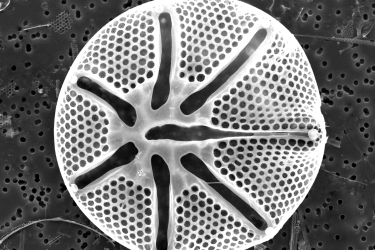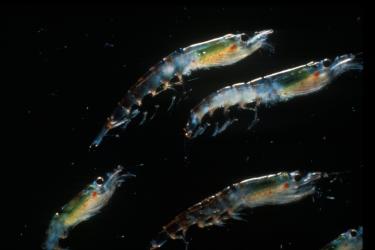During the day, our scientists collect acoustic data and verify target identity with trawling. But during the night, when most of the scientists have gone to bed, a few of us keep the science running. Nighttime operations primarily consists of deploying the Conductivity-Temperature (CTD) rosette which gathers oceanographic data such as conductivity, temperature, dissolved oxygen, and chlorophyll fluorescence. The CTD can also be triggered to collect water at specific depths. Quite a few people are involved with CTD operations: the chief scientist picks 4-7(!) locations for data collection, the survey technician works with the deck crew and the winch operator for CTD deployment, retrieval, and operation (up to 500 meters below surface), and our nighttime scientist takes water samples for environmental DNA (eDNA) analysis. With CTD sampling locations as close as a few nautical miles apart, the CTDs keep all the nighttime crew busy. But, we often have just enough time to check out the sunrise.
What is eDNA?
Scattered in the last few posts have been mentions of environmental DNA or eDNA. The principle behind this is that every organism is shedding small amounts of tissue and waste into its environment and this material potentially contains DNA (eDNA) from the source organism. Genetic analysis of the eDNA can help us to identify, and possibly quantify, the organisms present in the environmental sample (sediment, water, air, etc.). For marine fish, we collect 2-3 liter seawater samples and filter the water to concentrate the eDNA. These filters are preserved, stored, and brought back to the lab for DNA extraction and genetic analyses.
The eDNA project on the Shimada this year is collecting water samples at as many CTD stations as possible on Legs 2-4, at a range of depths from 25 to 500 m below the surface. We will analyze how Hake eDNA travels through the ocean system and investigate its potential as a tool for quantitatively assessing Hake populations.

Sunrise over the hills of California and the CTD. Insider tip, Niskin bottle 7 has the slowest water flow when retrieving water samples. Photo: NOAA Fisheries

The CTD with 11 Niskin bottles for collecting water. Photo: NOAA Fisheries

Photo courtesy of seaharmony.org.

Filtering three water samples. The seas must have been calm as in heavy seas you could see the roll of the boat in the way the water creeps up to the top of the cup. I may even filter only two at a time if it's really rough. Photo: NOAA Fisheries


